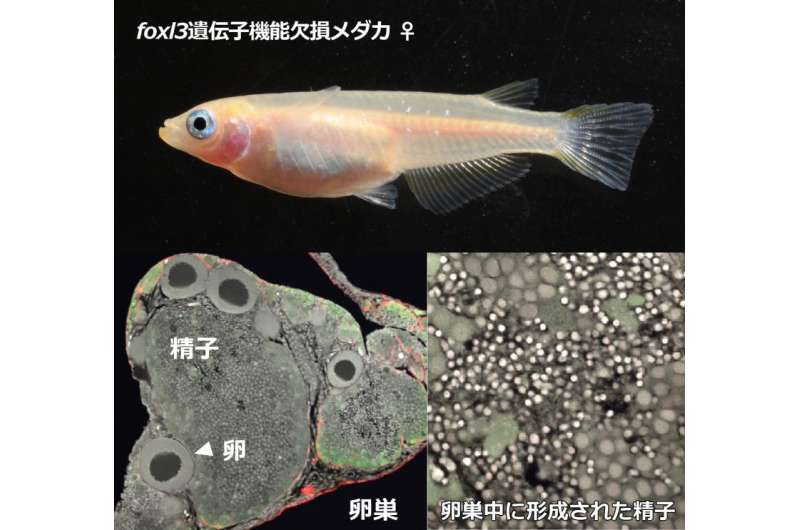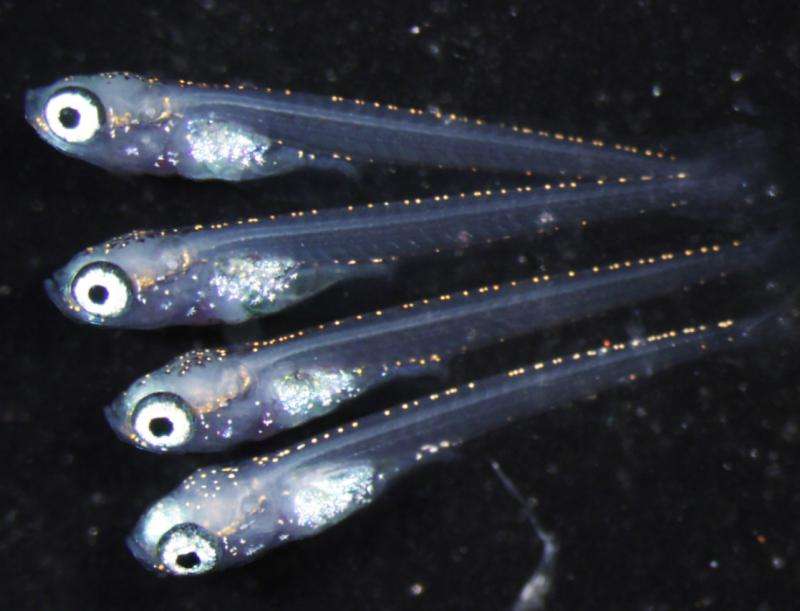To be sperm, or not to be sperm? Discovery of genetic switch that determines germ cell fate

Researchers in Japan have found, for the first time in vertebrates, a genetic switch that determines whether germ cells become sperm or eggs. The gene is named foxl3, and has been identified using a small fish called medaka (Oryzias latipes). In medaka without this gene's functionality, surprisingly, sperm are produced in the ovaries of females. The sperm that are produced function normally, and have been confirmed to produce normal offspring. These results will be announced in the journal Science through Science Express on June 11th.
Dr. Toshiya Nishimura, Associate Professor Minoru Tanaka and their colleagues of the National Institute for Basic Biology, National Institutes of Natural Sciences, in collaboration with Dr. Satoru Kobayashi of the Okazaki Institute for Integrative Bioscience, and through joint research with Kyushu University's Dr. Mikita Suyama and Dr. Yasuyuki Ohkawa, revealed that the foxl3 gene works in the germ cells of females "to suppress differentiation into sperm".
In females lacking functional foxl3 genes, the small fish's body appearance is still totally female, however a large number of sperm are formed in the ovaries, and a small number of eggs are formed at the same time.
It has also become clear that in these females lacking the function of foxl3 functional sperm can be obtained in a shorter period of time than in normal wild-type males. Applied research into uses for aquaculture is already underway.
"In spite of the environment surrounding the germ cells being female, the fact that functional sperm has been made surprised me greatly. That this sexual switch present in the Germ Cells is independent of the body's sex is an entirely new finding," Dr. Nishimura said.

Dr. Tanaka commented: "While germ cells can become either sperm or eggs, nobody knew that in vertebrates the germ cells have a switch mechanism to decide their own sperm or egg fate. Our result indicates that once the decision is made the germ cells have the ability to go all the way to the end. I believe it is of very large significance that this mechanism has been found."
More information: "foxl3 is a germ cell-intrinsic factor involved in sperm-egg fate decision in medaka," by T. Nishimura; Y. www.sciencemag.org/lookup/doi/ … 1126/science.aaa2657
Journal information: Science , Science Express
Provided by National Institutes of Natural Sciences



















